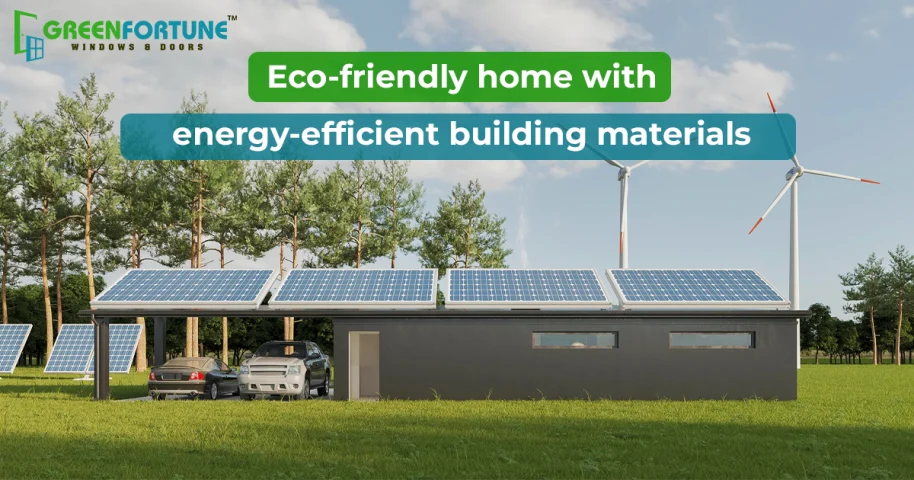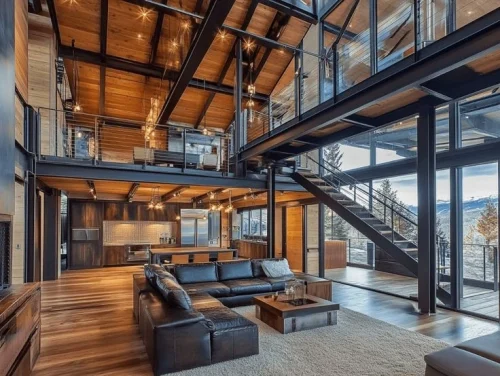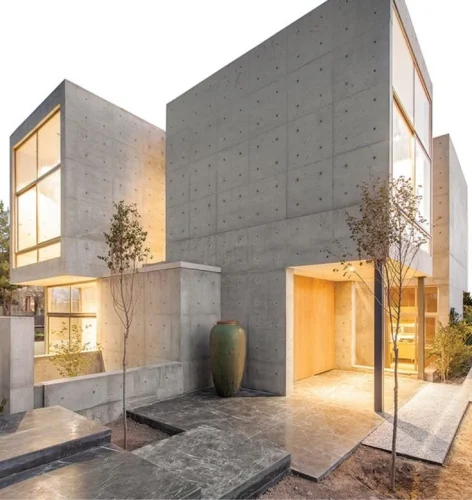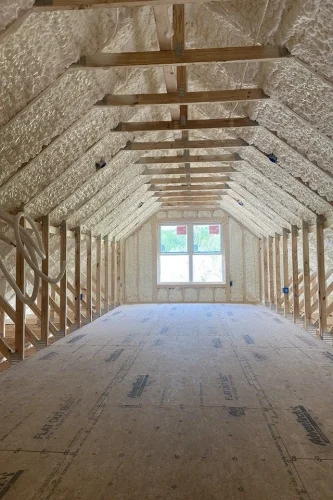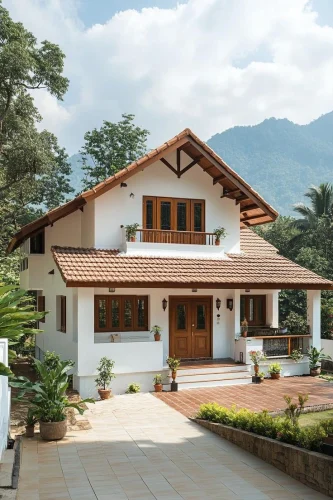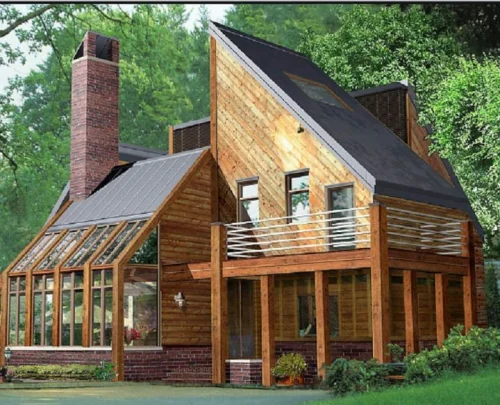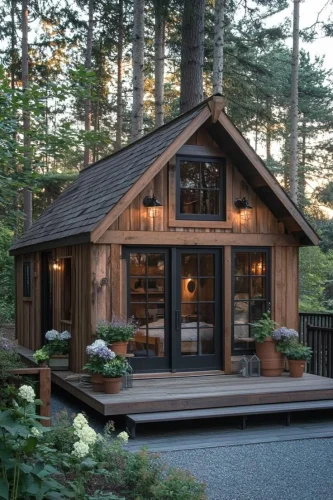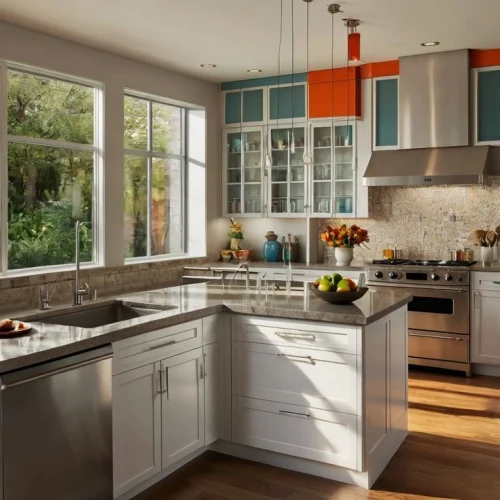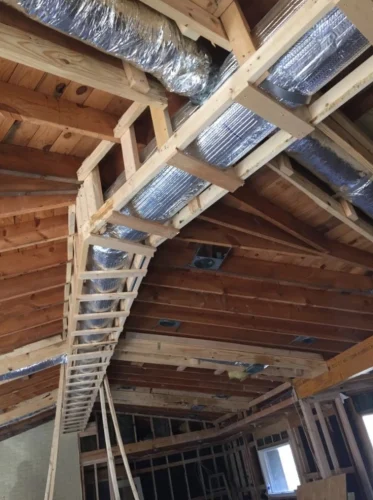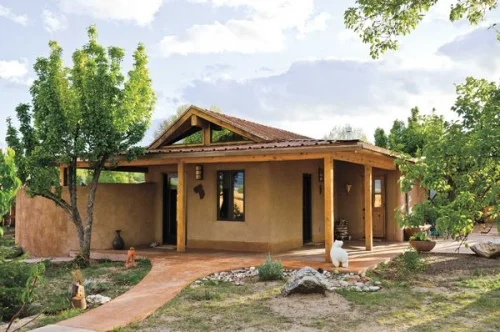
Why Millennials Prefer Low-Maintenance Building Materials Over Traditional Ones
May 23, 2025
The Ultimate Guide To Simple & Small Arabic House Design For A Luxurious Home
May 23, 2025Thermal comfort is something we all need, but have you ever thought about how to get that comfort without using the fan or AC constantly? In India, where summers are very hot and winters can get quite cold, the materials used to build your home matter a lot. Achieving the right indoor temperature without overusing appliances is essential for enhancing energy efficiency and maintaining a pleasant living environment.
Choosing the right materials during construction can make a huge difference in elevating the energy efficiency of your home. Explore this blog to learn more about thermal comfort, its benefits, elements influencing it, and the right materials to improve energy efficiency to make to take a wise decision for your home.
What is Thermal Comfort?
Thermal comfort is the state of mind or feeling of being comfortable and satisfied with the temperature inside your house. When you are thermally comfortable, you don't feel too hot, too cold, or sticky due to humidity. You feel pleasant inside your home, no matter what the weather is like outside, when you construct your home with the proper materials and perfect design.
Also Read: https://thegreenfortune.com/office-glass-door-designs/
Benefits of Enhancing Thermal Comfort
Poor thermal comfort can affect your everyday activities and your lifestyle. When your home stays at a comfortable temperature, life gets easier. Some of the benefits of thermal comfort are given below.
- Lower electricity bills by reducing the use of fans, ACs, or heaters
- Better health and sleep quality with balanced indoor temperatures
- Allows you to relax in a cozy and well-regulated space
- Offers focus and concentration and reduces stress and fatigue
- Enhanced thinking and decision-making with better cognitive performance
- Long-term savings on energy bills and system maintenance
- Protected skin health due to dry and insulated indoor air
- Decreased dependence on fossil fuels and eco-friendly
Factors Influencing Thermal Comfort
Thermal comfort depends on several elements, and they are significant elements in creating a balanced indoor environment. Some of the factors that influence thermal comfort are explained below:
Air Temperature
The surrounding air temperature has a great effect on how warm or cool we feel. In winter, temperatures between 19°C and 21°C are perfect, while in summer, 24°C is usually comfortable for most people.
Also Read: https://thegreenfortune.com/home-demolition/
Wall and Surface Temperature
The temperature of walls, floors, and windows also plays a key role. If walls are too hot or cold, they can disturb the indoor balance and make you feel uncomfortable.
Air Humidity
Humidity refers to the amount of moisture in the air. For good comfort, indoor humidity should stay between 40% and 60%. If it’s too high, you might feel colder and end up using more heating.
Airflow
Air movement can either help or disturb comfort. In summer, gentle airflow can feel refreshing. But in winter, strong air movement can make a room feel colder than it actually is.
Energy-efficient building materials
Thermal comfort cannot be achieved only by controlling the indoor temperature, but choosing the right building materials plays a major role. It naturally regulates indoor climates, reduces energy consumption, and promotes sustainability. The top 10 energy-efficient building materials are given below.
1. Recycled Steel
Recycled steel is a sustainable alternative to traditional wood framing. It retains its strength even after multiple recycling processes. It is perfect for structural components in areas prone to extreme weather conditions. Using recycled steel reduces the need for virgin materials like aluminium and glass. It conserves natural resources and decreases environmental impact. It is best suited for the structural frameworks in homes located in cyclone-prone coastal regions or earthquake-sensitive zones.
Also Read: https://thegreenfortune.com/think-twice-before-using-laterite-bricks-heres-why-13103/
2. Insulating Concrete Forms (ICFs)
ICFs consist of concrete poured between two layers of insulating material. It creates a highly energy-efficient wall system. Homes built with ICFs can experience up to 44% less energy required for heating and 32% less for cooling compared to traditional wood-frame homes. It is perfect for urban residences in areas with significant temperature variations, such as Delhi, Hyderabad, and Mumbai.
3. Plant-Based Polyurethane Rigid Foam
Plant-Based Polyurethane Rigid Foam is derived from renewable resources like bamboo, hemp, and kelp. It offers excellent insulation properties, including high moisture and heat resistance. It is also effective against mold and pests, and makes it a healthier alternative to traditional insulation materials. It is best suited for Interior insulation in homes located in humid regions like Kerala, coastal areas of Andhra Pradesh, and Tamil Nadu.
4. Straw Bales
Straw bales are an age-old building material known for their excellent insulation capabilities. It offers R-values of approximately R-2 per inch. They are sustainable, biodegradable, and can significantly reduce heating and cooling costs. It fits best for eco-friendly homes in rural areas or regions with dry climates, such as parts of Rajasthan, Maharashtra, and Andhra Pradesh.
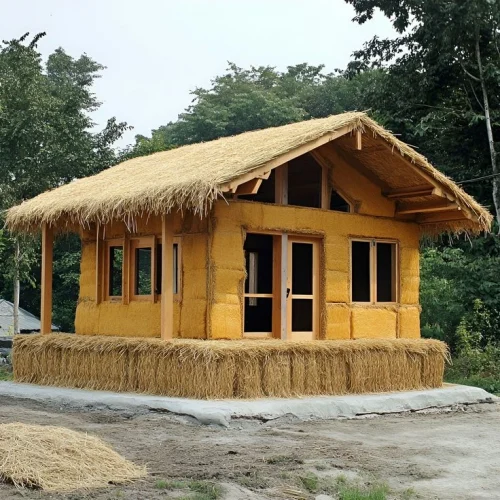
5. Cool Roofing Materials
Cool roofs are designed to reflect more sunlight and absorb less heat than standard roofs. They can lower roof temperatures by up to 50°F (28°C). It reduces the need for air conditioning and enhances indoor comfort. It is great for homes in hot, sunny climates like Chennai and Ahmedabad.
Also Read: https://thegreenfortune.com/upvc-solvent/
6. Structural Insulated Panels (SIPs)
SIPs are prefabricated panels consisting of an insulating foam core sandwiched between two structural facings. They provide superior insulation and airtightness. It leads to energy savings of up to 50% compared to traditional construction methods. It is best suited for modern homes aiming for quick construction and high energy efficiency.
7. Recycled Wood/Plastic Composite Lumber
This composite material combines recycled plastic and wood fibers. It offers a durable, low-maintenance, and eco-friendly alternative to traditional lumber. It is resistant to rot, mold, and insect damage. It fits best for outdoor applications like decking, fencing, and garden furniture in homes.
8. Low-Emissivity (Low-E) Windows
Low-E windows have a special coating that reflects infrared light. It keeps heat inside during winters and outside during summers. They also reduce UV light penetration, protecting interiors from fading. It is perfect for homes in regions with extreme temperatures, such as the northern plains or central India.
9. Vacuum Insulation Panels (VIPs)
VIPs offer up to ten times the insulation of traditional materials within a much thinner profile. They are perfect for spaces where insulation thickness is a concern. It is great for urban apartments or homes where space optimization is crucial.
Also Read: https://thegreenfortune.com/marble-flooring-cost/
10. Earth (Adobe and Rammed Earth)
Building with earth materials like adobe bricks or rammed earth walls provides excellent thermal mass. It naturally regulates indoor temperatures by absorbing and releasing heat slowly. It is best suited for traditional homes in arid regions like parts of Maharashtra or Telangana.
Final Thoughts
Thermal comfort can be attained easily by making smart choices right from the construction stage. By selecting energy-efficient and climate-appropriate building materials, you can create a home that stays comfortable throughout the year while also reducing your energy bills and environmental impact. Select the best building materials for an energy-efficient and eco-friendly home based on your personal preferences and budget.
GreenFortune: Smart uPVC Solutions
Build a home that’s comfortable, secure, and energy-smart with GreenFortune’s premium uPVC windows and doors. Our products are perfect for modern Indian homes and offer thermal insulation, noise reduction, and all-weather durability.
Each product combines high-quality materials with innovative design to deliver long-term performance and effortless style. Explore GreenFortune, where smarter design meets lasting comfort.
FAQs
- How do building materials affect thermal comfort?
Materials like insulated concrete, recycled steel, and straw bales help regulate indoor temperatures by reducing heat transfer. It reduces energy usage and maintains a comfortable living environment.
- Do energy-efficient materials cost more?
Some materials may have a higher upfront cost, but they offer long-term savings through reduced energy bills, lower maintenance, and improved durability.
- Can I use these materials during renovation?
Yes. Many energy-efficient materials, like cool roofing systems or insulation panels, can be added during renovations without completely reconstructing the home.
- What is the role of windows and doors in thermal comfort?
Windows and doors made from materials like uPVC with proper sealing and double glazing help prevent heat gain or loss. It improves thermal comfort and reduces energy use.
- What is R-value, and why is it important?
R-value measures how well a material resists heat flow. The higher the R-value, the better the insulation. It is crucial to choose building materials that enhance thermal comfort.







